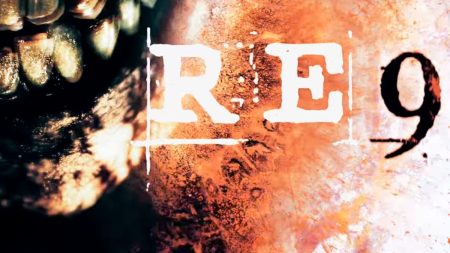The New York Times Mini Crossword for December 13, 2024, presented a distinctly New York flavor, potentially posing challenges for those unfamiliar with the city’s transit system and iconic landmarks. The puzzle included clues referencing subway fares, a prominent hotel featured in the film “Home Alone 2,” and other localized references. For those stumped by the clues, this summary provides the complete solutions, offering both answers and explanations to enhance understanding of the puzzle’s construction. Furthermore, it directs readers to additional resources for daily crossword solving tips and access to other games within the New York Times Games collection.
The across clues began with 1A: “Spread out, as one’s fingers,” with the answer being SPLAY. 6A, “Long cloud of smoke,” was solved with PLUME. 7A tapped into New York life with “Subway payments,” answered by FARES. 8A offered a touch of tranquility with “Kind of garden with a bonsai tree,” solved as ZEN. Lastly, 9A presented a polite inquiry, “Might I ___ …,” completed with ADD.
The down clues provided a complementary set of challenges. 1D, “Rating on a Hawaiian Tropic bottle, for short,” was a straightforward SPF. 2D invoked a famous New York landmark with “New York hotel featured in ‘Home Alone 2,’ with ‘the’,” the answer being PLAZA. 3D, “Enticed with bait,” was solved with LURED. 4D touched on civics with “Modify, as the Constitution,” leading to AMEND. Finally, 5D referenced college admissions with “Reply to roughly 3.6% of Harvard applicants for the 2028 class,” a celebratory YES.
Beyond providing the solutions, this summary aims to illuminate the solving process. The clue “Spread out, as one’s fingers” (1A) evokes the image of extending one’s digits, leading to SPLAY. “Long cloud of smoke” (6A) conjures the visual of a PLUME. “Subway payments” (7A) is a direct reference to the cost of riding the subway, hence FARES. “Kind of garden with a bonsai tree” (8A) links the miniature tree to a ZEN garden. “Might I ___ …” (9A) suggests adding something to a conversation or request, resulting in ADD.
Similarly, the down clues offer logical connections to their answers. “Rating on a Hawaiian Tropic bottle, for short” (1D) immediately brings to mind SPF, the sun protection factor. “New York hotel featured in ‘Home Alone 2,’ with ‘the'” (2D) specifically points to THE PLAZA hotel. “Enticed with bait” (3D) describes the act of LURING. “Modify, as the Constitution” (4D) directly relates to the process of AMENDING. “Reply to roughly 3.6% of Harvard applicants for the 2028 class” (5D) signifies a positive response, a YES.
This detailed explanation emphasizes the wordplay and logic inherent in crossword puzzles. Each clue offers hints that, when carefully considered, lead to the correct solution. Understanding the nuanced language and the context of the clues is crucial for successful crossword solving. The combination of general knowledge, vocabulary skills, and logical deduction allows solvers to navigate the grid and complete the puzzle.
For those interested in expanding their crossword-solving prowess, the New York Times Games section offers a plethora of puzzles. While the current day’s Mini Crossword is freely accessible, a subscription unlocks an archive of past puzzles, providing ample opportunity for practice and improvement. Furthermore, resources are available offering tips and tricks for tackling these miniature brainteasers. These resources can help solvers identify common crossword clue patterns, develop strategies for deciphering cryptic clues, and enhance their overall solving abilities.
The Mini Crossword serves as a gateway to the broader world of word puzzles within the New York Times Games collection. From the daily Wordle, with its letter-guessing challenge, to the interconnected word groups of Connections, and the sequential word transformations of Strands, there’s a puzzle to engage every type of word enthusiast. Exploring these different formats can further hone one’s word skills and provide a diverse range of mental stimulation.
In addition to playing the Mini Crossword, those seeking daily puzzle challenges can find hints and answers for other New York Times games like Wordle, Connections, and Strands. These resources provide support for those seeking to maintain a daily puzzle-solving streak or simply enjoy the satisfaction of cracking the code. The combination of these various word games creates a rich and engaging experience for players of all levels, from casual solvers to dedicated puzzle enthusiasts.
The New York Times Mini Crossword, and the broader suite of games offered by the publication, cater to a diverse audience. The accessibility of the Mini Crossword, with its compact grid and straightforward clues, makes it an ideal entry point for novice solvers. Meanwhile, the layered meanings and wordplay embedded within the clues provide a satisfying challenge for seasoned puzzle enthusiasts. This balance of accessibility and complexity ensures that the Mini Crossword remains an engaging pastime for a wide range of players.
Moreover, the Mini Crossword’s connection to New York City adds a unique dimension to the puzzle experience. By incorporating local references and landmarks, the puzzle becomes more than just a word game; it transforms into a miniature celebration of the city’s vibrant culture and distinctive character. This localized approach allows players to connect with the puzzle on a deeper level, fostering a sense of familiarity and engaging with their knowledge of the city. This localized approach can also serve as a learning opportunity for those unfamiliar with New York City, introducing them to key aspects of its identity.
The December 13, 2024 puzzle exemplified this connection to New York City, referencing the city’s subway system and a prominent hotel. This focus on local details not only added a layer of challenge for solvers but also reinforced the puzzle’s identity as distinctly “New York.” This approach contributes to the puzzle’s appeal, making it a unique and engaging experience for players. The inclusion of such specific references also highlights the puzzle creators’ intentionality in crafting a puzzle that resonates with a particular audience.










